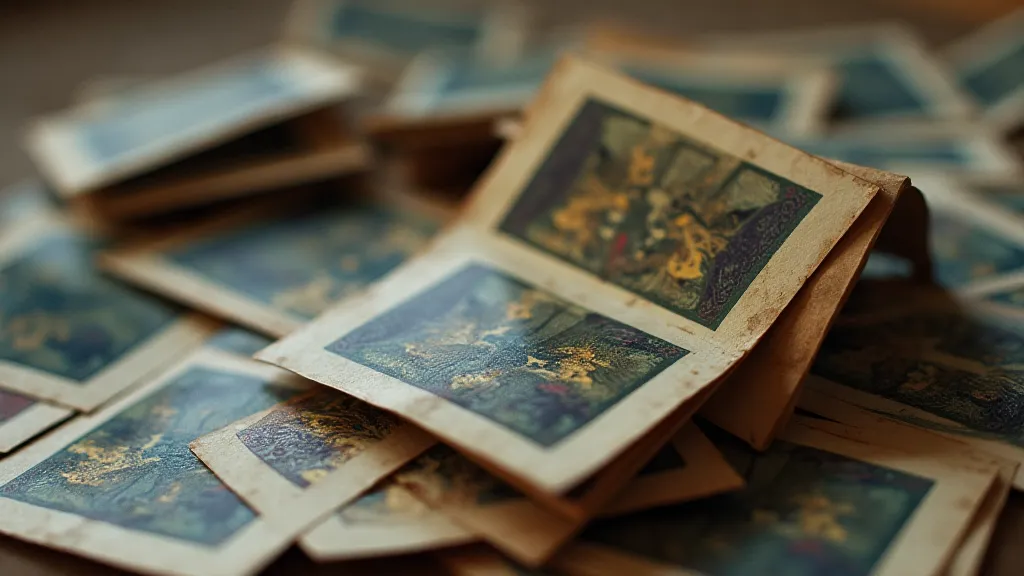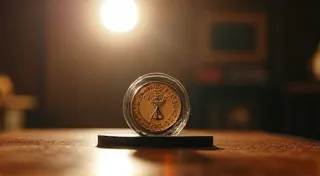A Collector's Cosmology: Mapping the Rare and Obscure within the View-Master Universe
There's a peculiar magic held within a small, circular reel. A magic that transports you across continents, through time, and into the memories of those who experienced it first. I’m talking, of course, about the View-Master reel. While many associate it with childhood wonder and family vacations, for a dedicated few, collecting these humble relics is an immersive passion – a collector's cosmology, if you will – charting a universe of scarcity, history, and quiet beauty. It's a pursuit that has led me down rabbit holes of forgotten factories, meticulous photographers, and the enduring power of visual nostalgia.
The View-Master itself, invented by Bernard G. and David P. Ehrich in 1933, was initially conceived as a stereoscopic slide viewer for travel enthusiasts, showcasing European landscapes. The early reels were mostly architectural and artistic scenes, a sophisticated offering that quickly caught the attention of a nation eager to escape the harsh realities of the Depression. But the real boom came with the introduction of cartoon reels and, crucially, the “Story Reels” – narratives told through a series of interconnected images. Suddenly, the View-Master became a children’s toy, a window onto far-off lands and fantastical adventures. And with that shift came the seeds of a collectible phenomenon.

The Holy Grails: Reels Lost to Time
Identifying the 'holy grails' of View-Master collecting isn't simply about rarity; it's about the confluence of scarcity, historical significance, and aesthetic appeal. Some reels are scarce because they were only released in very limited quantities. Others disappeared when their associated viewers were discontinued or a particular licensing agreement expired. Still others were simply victims of circumstance – lost to floods, fires, or just plain neglect. These are the reels that fuel the dreams and occasionally the frustrations, of serious collectors. The feeling of uncovering a truly lost reel, one that seemed destined to remain buried in the sands of time, is a profound reward.
Take, for example, the "Disney's Davy Crockett" reels from 1955. Following the phenomenal success of the television show, demand for anything related to the King of the Wild Frontier went through the roof. However, the reels themselves were only available through a mail-order promotion, making them incredibly difficult to find today. A complete set in good condition can fetch thousands of dollars. Then there's the "Civil War" reel set, released in 1958. Not only are they historically significant, documenting a pivotal period in American history through a child's viewpoint, but their limited release and subject matter elevate them to an almost mythical status. The very notion of how such a powerful and relevant subject matter could have been relegated to such obscurity speaks volumes about the shifting priorities of the time.
But it's not just the big-name franchises that command attention. Smaller, regional promotional reels often hold a particular charm. Think of the reels promoting local businesses or attractions – a bygone era of Americana captured in vivid, stereoscopic detail. These reels aren’t necessarily ‘worth’ a fortune in the traditional sense, but they represent a unique and irreplaceable snapshot of a community’s history. Imagine a reel documenting a local fair, a snapshot of community spirit now seemingly lost to the relentless march of progress. The challenge often lies in piecing together the stories behind these reels, understanding the context in which they were created and distributed. The ephemeral nature of these promotional items is part of what makes them so desirable to collectors.
The Craftsmanship and the Stories Behind the Images
What often gets lost in the pursuit of rare reels is an appreciation for the artistry that went into their creation. The images themselves were painstakingly photographed and printed. Early reels relied on hand-painted color separations, a process that demanded immense skill and patience. Later, more sophisticated printing techniques were employed, but the essence of careful craftsmanship remained. The photographs themselves are often remarkable – capturing moments in time that would otherwise be lost to us. Considering that the visual landscape of childhood was so vividly captured in these reels, it's interesting to think about how these artifacts shaped the perceptions of a generation. The way a place is presented, even a seemingly simple amusement park or roadside attraction, profoundly influences how it's understood.
I remember once acquiring a reel of “Grand Canyon National Park” from 1949. Looking at those images, I wasn’t just seeing the canyon itself. I was seeing the park rangers who guided those early tourists, the families who bundled into their cars for cross-country adventures, the photographers who risked precarious positions to capture the majesty of the landscape. Each image seemed to hum with the quiet energy of a forgotten era. It’s a moment in time, perfectly preserved, offering a glimpse into a world that has vanished. It prompts a deeper consideration of how we remember and celebrate the past.

The Collector's Imperative: Preservation and Appreciation
Collecting View-Master reels isn't simply about accumulating objects; it’s about preserving a piece of cultural heritage. Many of these reels are incredibly fragile, susceptible to fading, cracking, or damage. Restoration, when possible, should be undertaken with the utmost care and respect for the original material. The fragility of these items highlights a broader trend – the impermanence of many of the objects that define our childhoods. Cleanliness is paramount. Avoid harsh chemicals or abrasive cleaning methods. Gentle dusting with a soft brush is often all that’s needed. Think about the dedication of those who meticulously cared for these reels, ensuring their survival across generations. Their efforts resonate with a larger commitment to preserving our collective memory.
Beyond preservation, there’s the joy of sharing these treasures with others. I’ve hosted numerous View-Master evenings with friends and family, introducing them to the magic of stereoscopic imagery. It's a chance to transport them back in time, to evoke a sense of wonder and nostalgia. The experience of seeing these images through the viewer, experiencing the depth and clarity that was so captivating in a different era, is truly special. It's a way of ensuring that these stories continue to be told. It's fascinating to consider how these reels might be perceived by future generations – as relics of a bygone era, offering a unique window into the past.
Beyond the Rarity: The Enduring Appeal
The pursuit of rare View-Master reels is a journey that extends far beyond the acquisition of a few cardboard discs. It’s a deep dive into American history, a celebration of artistry and craftsmanship, and a testament to the enduring power of visual storytelling. It’s a collector's cosmology – a universe mapped not by stars and planets, but by the vivid images and forgotten memories contained within these humble, circular treasures. The way the View-Master captured moments and transformed them into immersive experiences speaks to a broader human desire to connect with the past, to relive cherished memories, and to share those experiences with others. The very idea of a childhood defined by these small, cardboard disks speaks to a longing for simpler times, a yearning for the wonder and magic that seems to fade with age.
Sometimes, the most compelling stories aren't found in the reels themselves, but in the context surrounding their creation and distribution. Lost reels, unreleased sets, and promotional items with mysterious origins – these are the puzzles that captivate collectors and drive the ongoing quest for discovery. The intrigue surrounding the Ghost Light on a Carousel, and the tales of reels thought lost forever, adds another layer of allure to this fascinating hobby.
And while the pursuit of these treasures can be intensely focused, it's important to remember the broader significance of these artifacts. These aren’t just objects to be collected and displayed; they are tangible links to the past, offering glimpses into the lives of those who came before us. The fleeting moments captured on these reels—the joy on a child's face, the vibrancy of a local event, the grandeur of a natural wonder—offer a profound connection to the shared human experience. It's also worth remembering how the View-Master played a significant role in shaping childhood memories, and how The Keystone of Childhood was intrinsically linked to the magic of the View-Master experience.
The dedication required to preserve and understand these pieces highlights a broader appreciation for the fragility of our collective memory. The ongoing quest to uncover lost reels, to piece together their histories, and to share their stories with others is a testament to the enduring power of nostalgia and the importance of preserving our cultural heritage. The very notion of “lost” reels echoes a broader truth about the passage of time and the impermanence of even the most cherished memories. The materials themselves, the way the View-Master itself captured and presented images, represent a snapshot of an era, and Echoes in Plastic offers further insight into the changing landscape of consumerism and its impact on our cultural memory.






